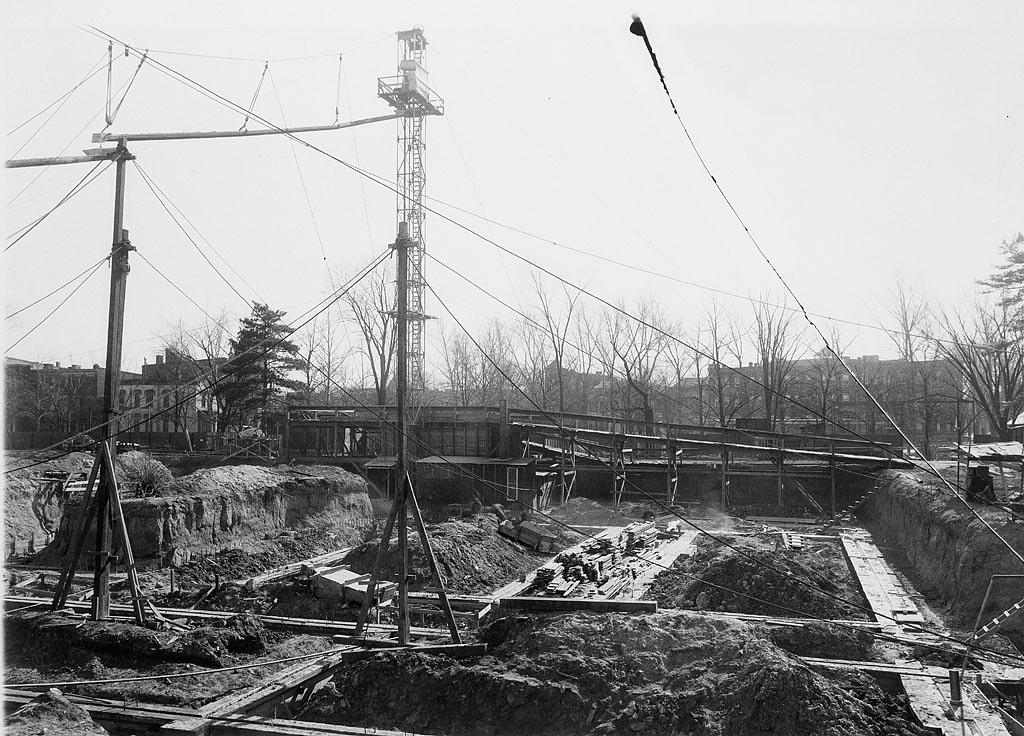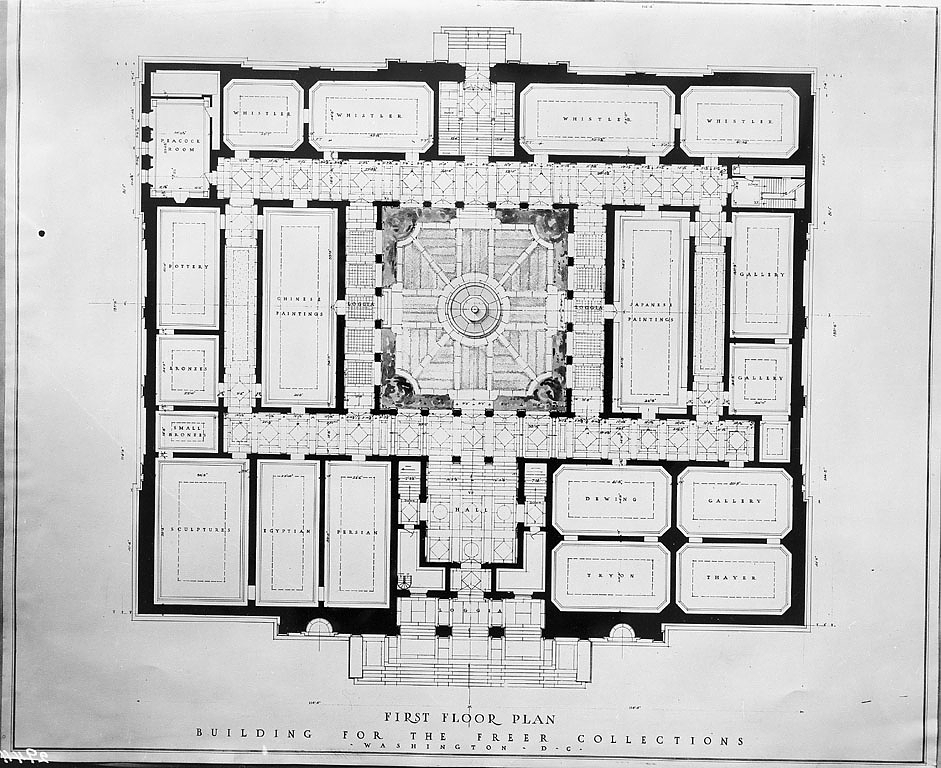The Freer Gallery (and the associated Arthur M. Sackler Gallery) has been one of my favorite museums at the Smithsonian ever since I took a course on Chinese art history through the Smithsonian Associates last year. After our first lecture, I took a lunchtime stroll down to the Freer to get a closer look at some of the artifacts our instructor had shown us. I was amazed at the intricate details of the ancient bronzes, enchanted by the delicate strokes of calligraphy and watercolor on hanging scrolls, and thoroughly taken with the beauty of the building itself.
As our online guide to the Freer explains in greater detail, the museum is unique in many ways, most notably its focus on Asian art; in addition, founding donor Charles Lang Freer stipulated that only permanent collection items could be shown in the galleries and that none of those items could be loaned to other institutions. He also retained custodial control of the collections until his death in 1919, four years before the gallery was opened to the public after a delay caused by the United States’ entry into World War I. With the centennial of the Freer’s groundbreaking upon us, I took a deeper dive into the Archives’ collections regarding its construction to see what new (to me) insights I could glean from the records.
One of the items I came across in my perusal of the Freer construction records was a detailed, comprehensive description of precisely how the museum was imagined by Freer and the gallery’s architect, Charles A. Platt, a friend of Freer’s. Everything from the type of stone used in constructing various parts of the building fabric to the precise finishing of the stone was specified. As construction progressed, Superintendent John Bundy kept detailed records that documented each step of the building process, which we now have in the Archives as his construction diaries, a series of terse entries describing work completed each day.
As the building progressed and the time approached that the museum would be handed over to the Smithsonian, a dispute arose between Bundy and one of his colleagues, as recounted in a letter from Katharine Rhoades to John Lodge, then of the Museum of Fine Arts, Boston, and future curator of the Freer. Rhoades, an artist in her own right who became close to Freer and involved in the gallery’s opening, dutifully reported to Lodge that Bundy and his colleague Stubbs had quarreled over who was in charge of the laborers working on the museum. Each understood himself to be the responsible party and therefore higher in the chain of command, leading to some friction on the construction site. Rhoades neatly resolved the matter by clarifying Bundy’s position as superintendent of construction, therefore placing Stubbs under Bundy’s supervision. In a handwritten postscript, Rhoades indicated that mutual animosity was the true source of the dispute, exacerbated by Stubbs being required to report to Bundy.
A personal matter wasn’t exactly what I expected to find in terms of new insights into the Freer when perusing construction records. But, alongside the recent opening of our newest Smithsonian museum, the National Museum of African American History and Culture, it is a reminder of the people—subject to human foibles—that created the institutions we now regard as monolithic. Their contributions continue to enrich our nation.
Related Resources
Accession 02-028, Freer Gallery of Art Superintendent of Construction, Contracts and Specifications, 1913-1918, Smithsonian Institution Archives
Accession 02-030, Freer Gallery of Art Superintendent of Construction, Diaries, 1919-1928, Smithsonian Institution Archives
Produced by the Smithsonian Institution Archives. For copyright questions, please see the Terms of Use.






Leave a Comment